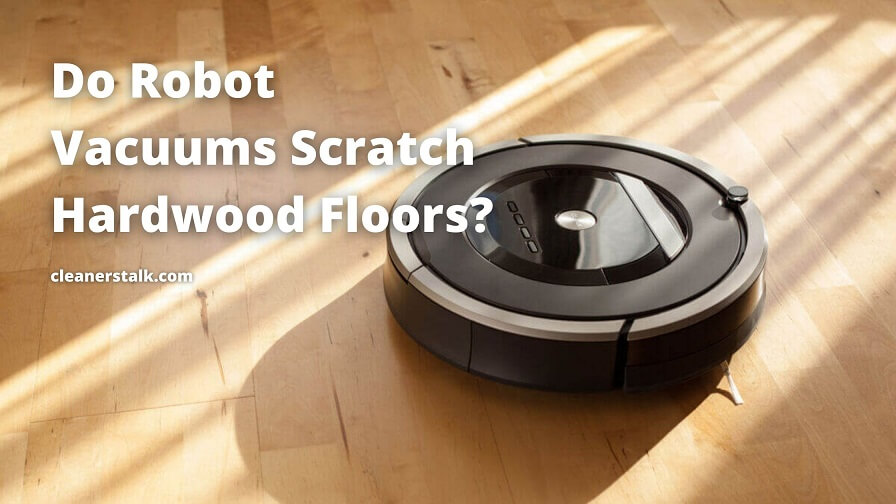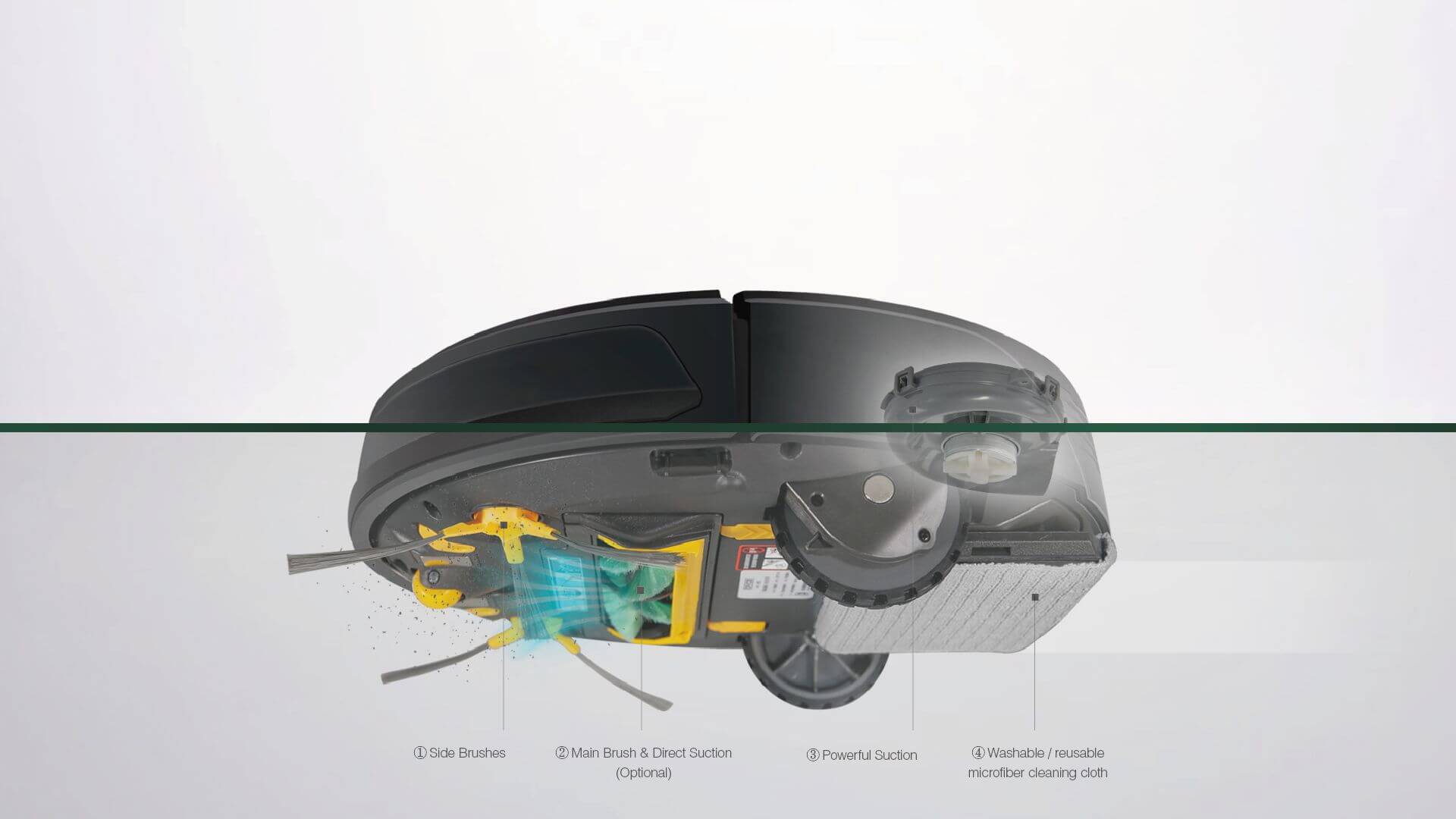
Do Robot Vacuums Scratch Hardwood Floors?
Cleaners Talk is reader-supported. This post contains affiliate links, we may earn a commission at no additional costs to you. As an Amazon Associate we earn from qualifying purchases.
Robot vacuums are autonomous machines that help you clean your house effectively. In fact, robot vacuums have become smarter and better over the years. Despite their advanced technology, however, many homeowners worry if a robot vacuum can scratch or damage hardwood floors.
Do robot vacuums scratch hardwood floors? Robot vacuums do not scratch hardwood floors. They are designed to thoroughly clean hard surfaces without damaging wood floors. However, if something becomes stuck underneath the robot vacuum, in the wheel or brush, it could potentially scratch your floor.
With that said, there are a number of factors to consider when using a robot vacuum on wood floors. Understanding them can be the difference between scratched wood floors and a smooth one. In this post, we will share with you the best tips on how to use a robot vacuum on hardwood floors correctly.
Are Robot Vacuums Safe for Wood Floors?
Generally, robot vacuums or Roombas are safe for wood floors. They can expertly clean hard surfaces with ease. However, unwanted accidents can sometimes happen because everyone has different homes and different circumstances. Additionally, each robot vacuum model is unique.

A robot vacuum's underbelly consists of a rotating brush (sometimes two), one front wheel, and the two side wheels.
There are three main components in the underbelly of a robot vacuum. The rotating brush (sometimes two), one front wheel, and the two side wheels. None of these parts are capable of scratching wood floors on their own. However, there are two possible reasons why a robot vacuum or Roomba may scratch hardwood floors:
1. Dirty or Grainy Wheels
A robot vacuum may scratch wood floors if grains of dirt, sand, or tiny plastic pieces get stuck in the wheels. These small particles are sharp enough to cause damage because the wheels become irregular and not smooth. In fact, there are several reports of Roomba causing damage on wood floors.
Think about it, a robot vacuum weighs around 7 lb. When you consider the weight of a robot vacuum, it becomes possible for foreign objects stuck in the wheels to damage wood floors, as it moves around softer surfaces. If you find irregular scratches on your wood floors, worn down wheels may be the culprit.
2. Stuck or Jammed Wheels
Alternatively, a robot vacuum may scratch wooden floors if the front wheel is stuck or jammed. The front wheel is designed to swivel and rotate, allowing the robot vacuum to change directions. However, if the front wheel becomes stuck, it will hinder the robot’s ability to move freely, potentially damaging hardwood floors.
Often, hair or fibers may build up and get caught in the mechanism. Foreign objects may also lodge between the wheel and its housing. Whenever the front wheel gets stuck, it may run around in circles while the front wheel drag across the floor and potentially scratch wood floors in the process.


To avoid this issue, many robot vacuum manufacturers have made the front wheel removable, allowing the owner to remove stuck foreign objects and to clean it regularly.
Do Robot Vacuums Work on Wood Floors?
So, do robot vacuums work on wood floors? Fortunately, robot vacuums work well on wood floors. In fact, many manufacturers claim that their robot vacuum models are best used on hardwood or wooden floors. Generally, most wood floors are smooth, allowing most robot vacuums easy navigation.
The key, however, is to clean and maintain your robot vacuum regularly. As long as every part of the robot vacuum is working as it should, you will not experience any trouble. Making sure the robot vacuum’s rollers are clean of debris should allow it to work smoothly on wood floors. Here are two simple things you can do:
How to Use a Robot Vacuum to Prevent Scratches on Wood Floors
1. Inspect the Front Wheel Before Using
The best thing you can do to prevent scratches on wood floors when using a robot vacuum is to clean and inspect the front wheel before each cleaning run. While it may sound like a burdensome task, it is well worth it, especially if your house is made of expensive hardwood flooring.
While a robot vacuum’s side wheels are often made of rubber, the front caster wheel is often made of plastic. This is why it has the most potential to scratch wooden floors, especially if it is not rolling smoothly. Dragging plastic across any semi-soft surface, like hardwood, can result in heavy damage.
2. Clean the Side Wheels Regularly
Additionally, it is good practice to clean the side wheels of a robot vacuum regularly. Thankfully, a Roomba’s side wheels are very easy to clean and maintain. Look for tiny pebbles or small pieces of glass/plastic in the grooves of the side wheel. You can pry them loose with a pointy tool or compressed air.
If you are a pet owner, animal hair can easily accumulate in the wheel mechanism. Eventually, these strands of hair will build up and may prevent the wheels from rotating. Clean them as often as possible. A robot vacuum’s side wheels should be able to rotate freely, with little to no resistance.
PRO TIP: If any of the wheels of your robot vacuum is old and worn-out, it is a good idea to replace them immediately. It is very easy and simple to do. Nowadays, most robot vacuum models come with replaceable wheels. Please note, however, that your wheel module and robot vacuum model may vary.
Final Verdict
And there you have it, the quick and complete answer to the question: do robot vacuums scratch hardwood floors? As with every other gadget and appliance, proper maintenance is the key for it to perform optimally. All it takes is a simple inspection of both the front wheel and the side wheels every now and then.
While robot vacuums are safe for wood floors, you need to take care of them to prevent accidents. Simple maintenance of your Roomba in order to protect a more expensive investment is a no-brainer. You would not want to see your beautiful wood floors damaged due to an avoidable thing now, would you? 🙂
You may also want to read our comparison reviews:
